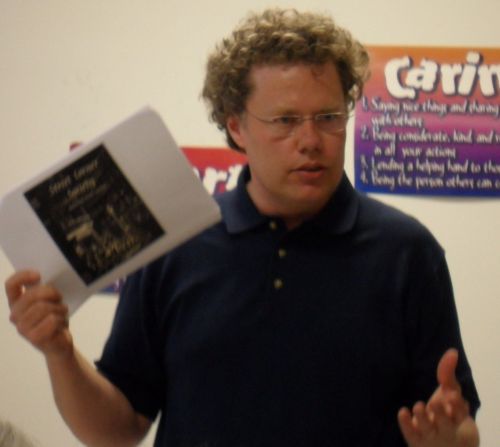The North End Historical Society and the Nazzaro Community Center recently sponsored a discussion with Dr. Oscar Andersson, revisiting the 1943 book “Street Corner Society”, by Willam Foote Whyte. It is now well known that the groundbreaking sociological book is about life in the North End in the late 1930s, although the author kept secret the location and names of people for decades. Dr. Andersson is a professor at Malmo University in Sweden and recently completed the Swedish translation for the book, which has already been translated into several other languages. In the book, William Foote Whyte, sought to understand the social structure of what was considered by academics and city planners to be a slum. Whyte’s method of moving to the neighborhood and studying it from within was part of what made his book unique.
With nearly 50 attendees at the June 16th Nazzaro Center discussion, a planned video presentation was unable to be shown because of sound problems. The full 40 minute video can be seen by clicking the ‘play’ button above. It contains interviews with the author, William Foote Whyte, as well as North End ‘corner boys’ in the book, Ralph Orlandella and Al Natale.
At the Nazzaro Center discussion, Dr. Oscar Andersson was introduced by organizer Dr. James Pasto and President Alex Goldfeld of the North End Historical Society. In the crowd was Christopher Iannella, Jr., the son of one of the central characters in Street Corner Society. Also in attendance was Dr. Martin Whyte, the son of William Foote Whyte.

“Street Corner Society” was first published in 1943. It has been re-published in four editions since then, selling over 200,000 copies. This is an extraordinary figure for a book coming out of academia. The book is also used in social science classes.
In his talk, Dr. Oscar Andersson said that the author lived at 7 Parmenter Street, above a restaurant. He later married and moved to 447 Hanover Street where he lived until 1940. He learned the Italian language during his years in the North End to better understand the community.
The book referred to the neighborhood as “Cornerville” and does not reveal the location as the North End or Boston, a secret that was kept until 1981. Whyte said he choose the North End because it was the most congested part of the city. At the time, there was 23,100 people living here as compared to about 11,000 today. Although there are a couple of chapters on crime and gambling, Andersson noted that the author generally felt safe living here.
An often debated point is the characterization of the North End as an “Italian Slum” used in the original subtitle for the book. The general theme is that the neighborhood was actually socially organized and functioning, not without order as an outsider might perceive. From living here, Whyte understood the institutions that existed on corners, clubs and in the churches.
“Street Corner Society” on Amazon.com
More information on the NEHS is available at www.northendboston.org.






Having read the book years ago, I would have loved to have been at this lecture. The video was very interesting too. What year was it from?